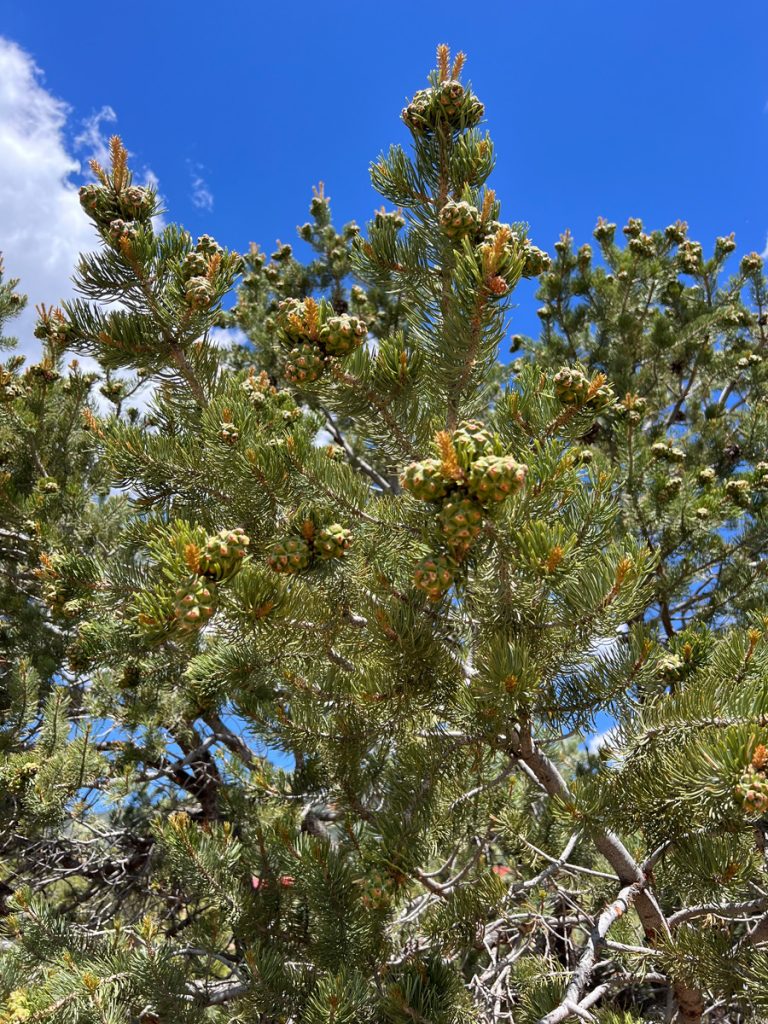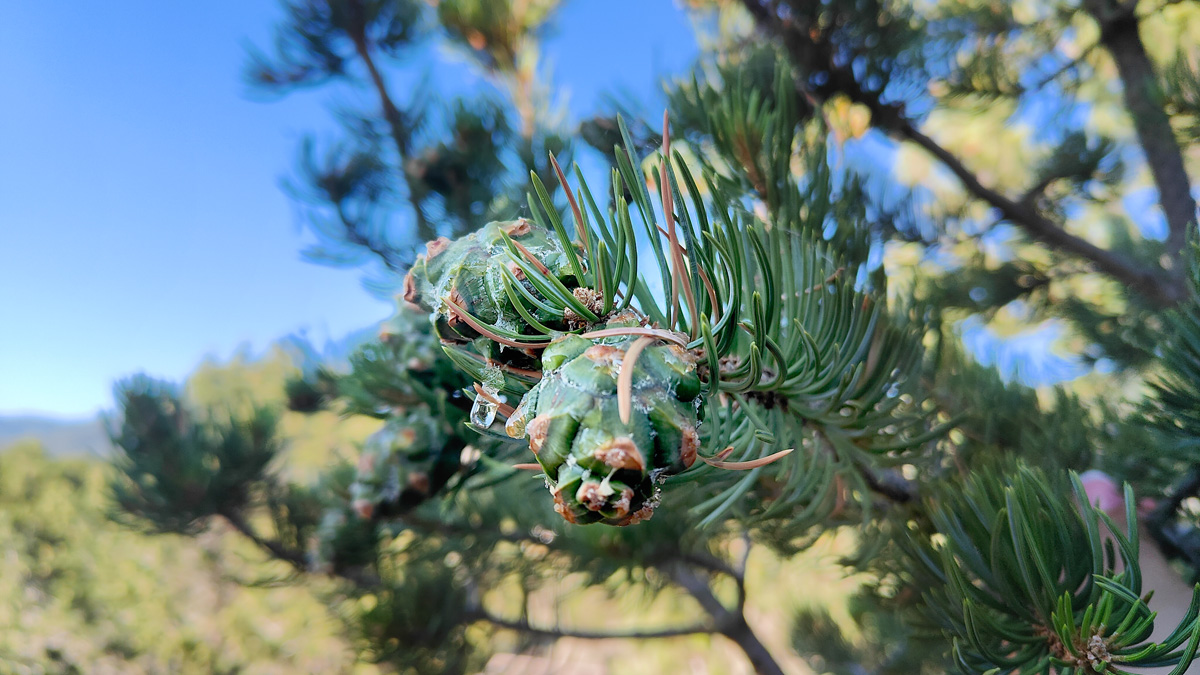
Piñon is a staple when talking about New Mexico’s products. Whether we’re burning it for firewood or eating the nut, it’s intertwined in our past and present.
First collected by Native American tribes throughout the 4-corner states the piñon pine offers a nice treat for those who can patiently sift through forest debris to find this treasure.
The piñon pine, or pinus edulis, is a small (usually 10 to 35 feet in height) bushy evergreen tree, found in dry arid regions across the southwest US. Piñon pine can be found in pure piñon forests or growing alongside juniper and sage in foothill areas at elevations between 4,000 and 9,000 feet.
Humans are not the only ones that enjoy this delicate, buttery seed; many birds and rodents enjoy it as well. Large seed crops are produced every three to seven years, as it takes the cone three years to reach maturity.
Piñon is one of those highly desired and labor-intensive treats that many look forward to. It’s a tradition that brings families and friends together and it begins with someone asking, “Wanna help me pick piñon?” Soon you will see cars lining the sides of roads where the piñon pine tree resides and pickers out with their best strategies for picking the most piñon.
The practice of picking piñon is uniquely interwoven in New Mexico tradition because of the sheer abundance of the tree species. Although they have suffered from environmental factors, such as the Ips bark beetle and drought, you can still find areas where the tree survives and thrives.
The small dark seeds are ripe once autumn comes around and they have fallen to the ground. Once the seeds have dropped, you have a few weeks to harvest. Most people will sit or squat underneath a piñon and sift through the debris of pine needles and duff underneath to look for the good seeds. If you roll the seed between your fingers, you can feel the weight and then can determine whether it is a dud or a good seed.
Another way I’ve seen people pick is to lay a sheet underneath the tree and wait for the seeds to fall. It’s kind of a signal for us… a signal that the season is about to change. It’s like watching the wild sunflowers bloom and knowing that school is right around the corner. The same is true with piñon. Once you see the cones open and the seeds have fallen, you know that fall is upon us.
The process is long and tedious but is worth it when you get your small bag of piñon filled, washed, and roasted. Roasting the nut brings out its rich, buttery flavor and makes it perfect for snacking. Here’s a quick recipe: Rinse nuts and remove any debris present. Let them dry out in a strainer for a few minutes. Line a cookie sheet with parchment paper. You can add salt at this point if desired. Roast at 350 degrees for about 10-15 minutes, turning occasionally. Let them cool, then enjoy. Store in an airtight container.
Happy picking!
Author
-

Experience working with the USDA Forest Service and extensive knowledge of the northern region, while maintaining and fostering strong community relationships remain a big priority.
View all posts


